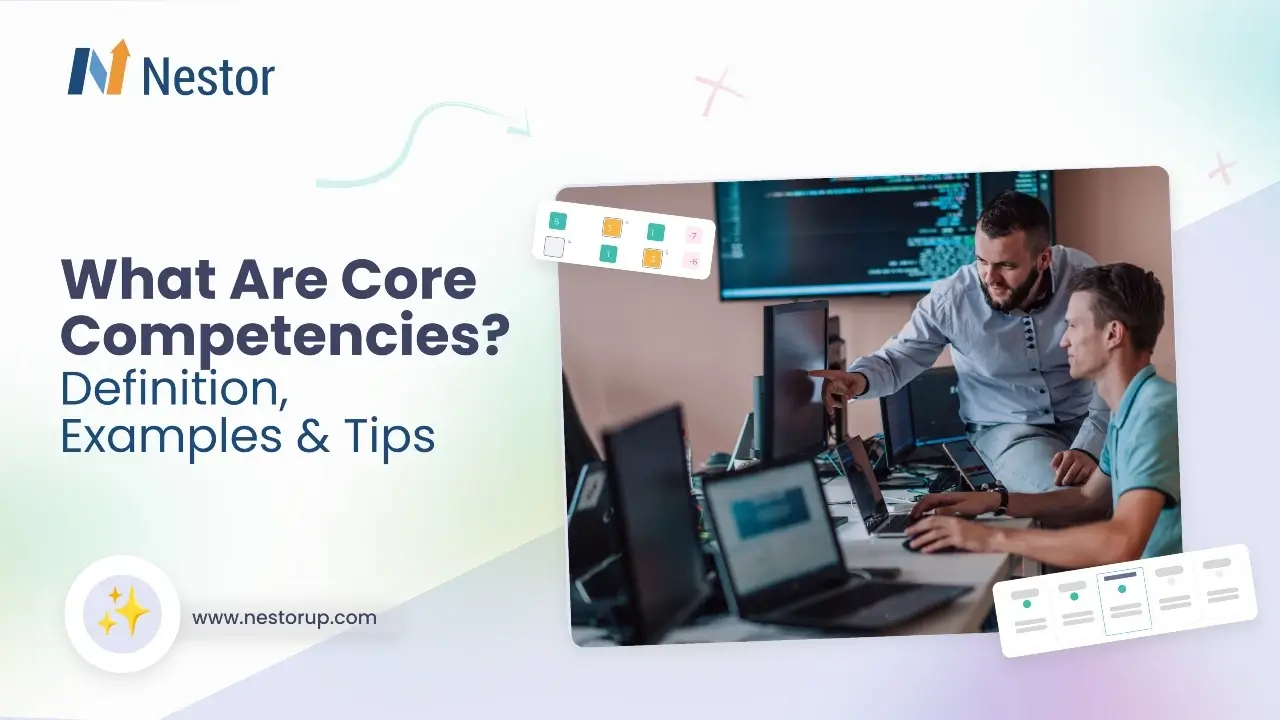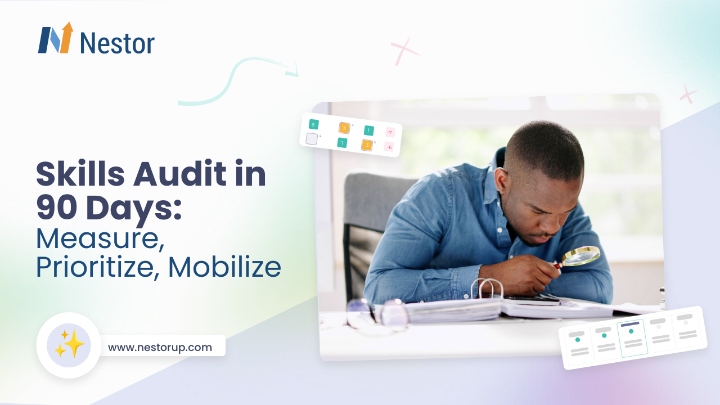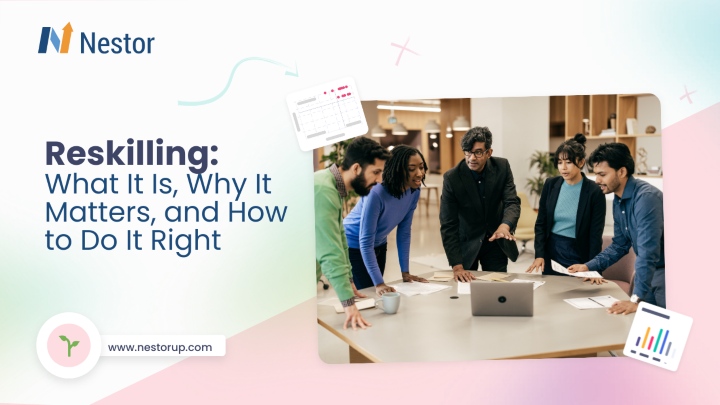
Contents
In today’s rapidly shifting business environment, sustainable success hinges on the unique strengths and capabilities of an organization. These strengths, known as core competencies, are the distinctive and fundamental attributes that provide a company with its competitive edge. They transcend individual skills to form the very essence of what makes an organization unique and resilient. As the marketplace becomes increasingly crowded and competitive, the importance of identifying and nurturing these core competencies cannot be overstated.
And their significance in the modern workplace is becoming increasingly evident. Core competencies, which amalgamate skills, knowledge, behaviors, and attitudes, serve as the foundational elements that set companies apart within their respective industries.
Statistics highlight the growing importance of core competencies in the workplace. According to a report by Lindsey M. Greco and Maria L. Kraimer, employees who possess core competencies aligned with organizational goals tend to perform better and are more likely to achieve higher levels of job satisfaction. Additionally, a report by the World Economic Forum indicates that by 2025, 50% of all employees will need upskilling and reskilling due to the changing nature of jobs. These statistics spotlight the critical necessity for businesses and professionals to cultivate and refine their core competencies to remain relevant.
But what exactly are core competencies, and why are they so crucial for both individual and organizational success? Core competencies are the unique combination of knowledge, skills, and abilities that are essential for the effective performance of a business. These competencies are deeply embedded within the organization’s culture, processes, and strategic initiatives, shaping its identity and driving its success.
For individuals within an organization, possessing core competencies means having a set of distinctive skills and attributes that contribute significantly to their roles and the overall success of the company. Amidst the whirlwind of evolving technologies and shifting market landscapes, cultivating a workforce rich in core competencies is paramount for staying ahead. Employees armed with robust core skills don’t just thrive in their roles; they become catalysts for organizational agility, innovation, and enduring success.
In this article, we will explore the concept of core competencies in depth, distinguishing them from general skills and providing industry-specific examples. We will also outline a structured approach to identifying core competencies within an organization and highlight their importance in fostering both individual and organizational success.
Understanding Core Competencies
These fundamental strengths and unique capabilities emerge from the collective learning, coordination, and integration of diverse skills, knowledge, behaviors, and technologies within the organizational framework. They encapsulate more than just a mere collection of individual skills; rather, they represent a synergy that is greater than the sum of its parts.
At the heart of core competencies lies a deep-rooted understanding of the organization’s strategic objectives and market dynamics. They are not static; rather, they evolve over time through continuous learning, adaptation, and innovation. By leveraging these competencies, companies can differentiate themselves from competitors, drive innovation, and create value for their customers.
When the topic was first introduced in the early 1990s, The Harvard Business Review outlined three factors of every core competency. To be considered a core competency, an ability must be:
- Rare: It should be unique and not widely available in the industry, making the organization stand out.
- Challenging for Competitors to Imitate: It should be difficult for competitors to replicate, thereby providing a sustainable competitive advantage.
- Of Superior Value to Customers: It should significantly contribute to the benefits perceived by the customer in the end product or service.
Gary Hamel and C.K. Prahalad, who popularized the concept, further emphasized that core competencies are a combination of pooled knowledge and technical capacities that allow a business to be competitive in the marketplace. They identified additional critical criteria for a core competency:
4. Access to a Wide Variety of Markets: A core competency should enable the organization to enter and compete in multiple markets.
Core competencies can include technological expertise, specialized knowledge, unique business processes, and strong relationships with stakeholders. These strategic assets empower companies to craft distinctive value propositions for customers and uphold their competitive edge in the market.
On an individual level, core competencies are the distinctive skills and attributes that significantly contribute to a person’s effectiveness and performance in their role. These personal competencies are often a blend of technical skills, soft skills, and behavioral attributes that align with the organization’s values and goals. For example, an individual’s ability to think critically, communicate effectively, and adapt to change can be considered core competencies that enhance their value within the organization.
For companies, core competencies might include proprietary technologies, efficient supply chain management, and exceptional customer service. These organizational competencies stem from the collective capabilities and processes that are ingrained in the company’s culture and operations. For instance, Apple’s core competencies are related to its innovative product design, strong branding, and a powerful ecosystem of products and services, which collectively contribute to its market dominance and customer loyalty.
Core Competencies vs. Skills
While the terms ‘core competencies’ and ‘skills’ are often used interchangeably, they represent different concepts. Skills refer to the abilities and expertise that an individual possesses, which can range from technical skills such as programming and data analysis to soft skills like communication and leadership. Skills are essential for the day-to-day functioning of an individual but do not necessarily confer a competitive advantage on their own.
Core competencies, on the other hand, are the distinctive attributes and abilities that arise from the integration and coordination of individual skills, behaviors, and knowledge. They are unique to the individual and are developed over time through experience, training, and personal development. Core competencies enable individuals to deliver unique value to their organization, differentiate themselves from their peers, and achieve long-term success.
Benefits of Identifying and Nurturing Core Competencies
The benefits of identifying and nurturing core competencies are profound for both individuals and organizations. For individuals, recognizing and developing their core competencies can lead to greater job satisfaction, enhanced career prospects, and personal growth. These competencies enable individuals to excel in their roles, adapt to new challenges, and continuously improve their performance. As a result, they become invaluable assets to their employers, often leading to increased recognition, promotions, and professional advancement.
For organizations, fostering a culture that emphasizes core competencies translates into a strategic edge in the business landscape. Leveraging the distinctive strengths of their workforce empowers companies to spur innovation, streamline operations, and elevate customer satisfaction. Employees who possess well-developed core competencies are more likely to contribute to strategic initiatives, collaborate effectively across teams, and respond adeptly to navigate market fluctuations. This not only strengthens the organization’s ability to achieve its strategic goals but also builds a resilient and adaptable business model that can thrive in dynamic environments.
Moreover, dedicating resources to the development of core competencies nurtures a culture of learning and growth within the organization. This culture promotes ongoing improvement, lifelong learning, and proactive problem-solving, all crucial elements for success in this day and age. Companies that prioritize the enhancement of core competencies are more adept at attracting and retaining top talent, as employees are drawn to environments that prioritize their personal and professional development.
Examples of Core Competencies by Industry
Exploring examples of core competencies across different industries offers valuable insights into the diverse strengths that drive organizational success. From the precision of the medical and pharmaceutical sector to the analytical prowess of finance, and the innovation of technology, each industry showcases unique competencies that underpin its competitive advantage. By examining these examples, companies gain a deeper understanding of the essential skills, knowledge, and capabilities that define excellence within their respective fields, providing a roadmap for strategic development and growth.
Medical/Pharmaceutical Industry
- Research and Development (R&D) Excellence: Companies like Pfizer and Merck have established themselves as leaders in R&D, allowing them to innovate and bring new drugs to market efficiently. Their ability to conduct cutting-edge research, secure patents, and navigate clinical trials is a core competency that drives their competitive advantage.
- Regulatory Compliance: Firms such as Johnson & Johnson excel in navigating the complex regulatory environments of the pharmaceutical industry. Their expertise in ensuring compliance with stringent safety and efficacy standards across different markets is a critical competency that protects their reputation and market access.
- Clinical Trial Management: Organizations like Novartis are proficient in designing, conducting, and managing clinical trials. This competency ensures that new treatments are rigorously tested for safety and efficacy, which is essential for gaining regulatory approval and market acceptance.
- Supply Chain Management: Companies such as Roche demonstrate excellence in managing complex pharmaceutical supply chains. Their ability to ensure the timely delivery of critical medications while maintaining quality and regulatory compliance is a vital competency that underpins their operational efficiency and customer satisfaction.
- Medical Affairs Expertise: Organizations like GlaxoSmithKline (GSK) showcase expertise in medical affairs, effectively communicating product information and supporting healthcare professionals. This competency in medical education, scientific engagement, and regulatory compliance enhances trust in their products and strengthens relationships with key stakeholders.
Finance Industry
- Risk Management: Banks like JPMorgan Chase have developed robust risk management frameworks that help them navigate financial uncertainties and protect their assets. Their ability to identify, assess, and mitigate various types of risks is a core competency that ensures financial stability and trustworthiness.
- Customer Relationship Management: Financial institutions such as Wells Fargo excel in building and maintaining strong relationships with their clients. Their ability to understand customer needs, provide personalized services, and maintain customer loyalty is a critical competency that drives business growth and customer retention.
- Investment Strategy: Firms like Goldman Sachs have deep expertise in developing sophisticated investment strategies. Their ability to analyze market trends, identify investment opportunities, and generate high returns for their clients is a core competency that reinforces their leadership in the financial industry.
- Compliance and Regulatory Adherence: Companies like Citigroup demonstrate excellence in navigating complex regulatory environments and ensuring compliance with financial laws and regulations. This competency protects the organization from legal risks and reputational damage while fostering trust with stakeholders and regulatory authorities.
- Financial Technology (Fintech) Innovation: Organizations such as PayPal showcase innovation in financial technology, revolutionizing payment solutions and digital financial services. Their competency in developing secure, convenient, and efficient fintech solutions drives market disruption and customer adoption.
Technology Industry
- Designing Technical Architecture: This involves developing and structuring the high-level framework for technology systems, ensuring they are scalable, efficient, and aligned with business objectives. Technical architects must consider future growth, system integration, and technology advancements to create robust and flexible architectures that support long-term business strategies.
- Cloud Computing Proficiency: Leveraging cloud technologies to enhance the scalability, flexibility, and efficiency of IT services and resources. This includes designing, deploying, and managing cloud-based solutions, understanding different cloud service models (IaaS, PaaS, SaaS), and ensuring data security and compliance within cloud environments. Amazon Web Services (AWS) is a prime example of a company that has made cloud computing proficiency a core competency. As a subsidiary of Amazon, AWS provides a comprehensive and widely adopted cloud platform, offering over 200 fully featured services from data centers globally.
- Innovative Solution Delivery: Innovating and delivering cutting-edge technological solutions requires creativity and forward-thinking. This competency focuses on developing and implementing new technologies or methodologies to solve complex business challenges. It involves research, prototyping, testing, and deployment of innovative solutions that drive competitive advantage and operational efficiency.
- User Experience (UX) Design: Designing intuitive and engaging user interfaces that enhance user satisfaction and interaction with digital products. UX designers conduct user research, create wireframes and prototypes, and test designs to ensure that digital products are accessible, efficient, and enjoyable to use, ultimately driving user engagement and loyalty.
- Artificial Intelligence (AI) and Machine Learning (ML) Expertise: Organizations like NVIDIA showcase expertise in AI and ML technologies, driving innovation in areas such as autonomous vehicles, healthcare, and gaming. Their competency in developing high-performance computing solutions and specialized AI hardware accelerates the adoption of AI-driven applications and services.
How to Identify Core Competencies at the company level
Embarking on the journey to identify core competencies at the company level necessitates a deep understanding of the organization’s strategic objectives, market positioning, and internal capabilities. It involves a comprehensive assessment of both tangible and intangible assets, encompassing not only technical skills and resources but also cultural values, innovation capacity, and customer-centricity.
1. Align with Objectives and Values
Start with Your Mission:
- Mission and Vision Statements: Revisit your organization’s mission and vision statements to understand its fundamental purpose and long-term aspirations. For example, if your mission emphasizes innovation and customer-centricity, core competencies related to creativity and customer service excellence would be highly relevant.
- Strategic Objectives: Examine your strategic objectives and business goals to identify the key outcomes your organization aims to achieve. What are the goals your organization aims to achieve in the next 5 to 10 years? For instance, if one of your strategic objectives is to expand into new markets, core competencies related to market analysis, strategic planning, and risk management would be essential.
- Core Values: Ensure that the competencies align with your organizational culture and values. Core competencies should reflect what your organization stands for and believes in. For example, if integrity and collaboration are core values, competencies related to ethical decision-making and teamwork would be integral to your organization’s success.
2. Conduct Market Analysis
Industry Trends:
- Benchmarking: Engage in rigorous benchmarking activities to assess your organization’s performance against industry standards and best practices. By comparing key performance indicators with industry benchmarks, you can pinpoint areas of strength and opportunities for improvement. Identify what competencies are driving success in your industry and how your organization measures up in comparison. This comparative analysis serves as a foundation for identifying and prioritizing core competencies that align with industry trends and demands.
- Competitive Analysis: Delve into competitive analysis to gain insights into your competitors’ strategies, strengths, and weaknesses. Study your competitors to understand their core competencies and areas of differentiation. By identifying gaps and opportunities vis-à-vis competitors, you can refine your strategic focus and prioritize competency development initiatives accordingly.
Customer Needs:
- Market Research & Customer Feedback: Undertake comprehensive market research to gain a deep understanding of customer needs, preferences, and emerging trends. Leverage various research methodologies, including surveys, focus groups, and data analytics, to gather insights into market dynamics and customer behavior. Analyze customer feedback across various touchpoints to discern patterns, trends, and areas for improvement. Identify competencies that contribute to positive customer experiences and those that may require further development. By systematically analyzing customer feedback, organizations can refine their competency profiles and tailor their offerings to better meet customer expectations.
Identify and track core competencies at the individual level
1. Competency mapping and selecting core competencies
- Key Roles and Competency Mapping: Dive deep into the roles and responsibilities across various job families within your organization. Scrutinize the tasks, duties, and expectations associated with each position to gain a thorough understanding of the intricacies and nuances of different roles. Identify the specific skills, knowledge, and attributes required for excellence in each role by considering both technical proficiencies and soft skills. Recognize that a combination of competencies contributes to optimal performance in a role.
This process involves carefully considering the unique demands and challenges of each position. Develop a comprehensive competency map that outlines the essential skills, knowledge areas, and behaviors necessary for high performance in each role. This step helps you find all the skills related to the jobs you have by thoroughly examining the roles, responsibilities, tasks, and expectations associated with each position. This mapping exercise serves as a reference point for understanding the complete competency landscape across the organization. It facilitates the identification of common themes and critical competencies that span multiple roles.
After identifying all the skills related to the jobs, you need to define which ones are core competencies. By mapping out the competencies, you can distinguish the core competencies that are fundamental and essential for most roles within the organization from those that are more specific or specialized. The core competencies are likely to be the ones that are consistently required across multiple job families or positions, and they form the foundation for success in various roles within the organization.
2. Competency based performance reviews:
- Evaluate Top Performers: Analyze the performance metrics of top-performing employees to discern patterns and trends. Identify the key skills, behaviors, and attributes that consistently contribute to their outstanding performance. This analysis sheds light on the core competencies that are critical for achieving exceptional results.
- Performance Review: For each core competency, clearly define what it entails and provide specific behavioral indicators or examples that demonstrate proficiency in that competency. Update your performance review templates to include sections dedicated to assessing each core competency. Provide rating scales or rubrics that allow managers to evaluate the employee’s level of proficiency in each competency based on the defined behavioral indicators.
By focusing on core competencies in performance reviews, you can ensure that employees are evaluated based on the skills and behaviors that are most essential for success within the organization. This approach promotes a shared understanding of what is expected, fosters continuous improvement, and aligns individual development with organizational needs. - 360-Degree Feedback: In addition to the manager’s assessment, gather feedback from multiple sources, such as peers, direct reports (if applicable), cross-functional colleagues, and even customers or clients. This 360-degree feedback provides a comprehensive perspective on the employee’s demonstration of core competencies. Carefully review and analyze the 360-degree feedback report, looking for common themes, patterns, and discrepancies across the different feedback sources. This analysis will provide valuable insights into the employee’s perceived competency levels from multiple perspectives. This approach fosters a culture of continuous feedback, promotes self-awareness, and provides a more well-rounded evaluation that supports meaningful development and growth.
3. Pinpoint and Bridge Core Competency Gaps
- Pulse Surveys: Conduct regular pulse surveys to gather employee feedback on various aspects of the organization. For example, a technology firm may administer quarterly pulse surveys to gauge employee satisfaction with work-life balance, career development opportunities, and organizational culture. These surveys can be particularly valuable in identifying gaps related to the development and support of core competencies within an organization.
When designing pulse surveys, include questions that specifically address the core competencies identified as critical for the organization. These could cover areas such as communication, problem-solving, leadership, teamwork, or job-specific technical competencies. Craft questions that allow employees to provide feedback on the organization’s support, resources, and opportunities for developing the core competencies. For example, “Do you feel you have adequate opportunities to enhance your problem-solving skills?” or “How satisfied are you with the communication training provided by the organization?”
Through targeted questions in the pulse surveys, organizations can gauge employees’ perceptions of the training, resources, and opportunities available for developing specific core competencies. If a significant number of employees express dissatisfaction or a lack of support in a particular competency area, it can indicate a gap that needs to be addressed. This targeted analysis can reveal areas where certain teams or functions may be lagging in developing particular core competencies, allowing for focused interventions.
In some cases, pulse survey data may reveal cultural or environmental barriers that hinder the development of core competencies. For example, if employees report a lack of opportunities for cross-functional collaboration or a risk-averse culture that discourages innovation, it can impede the growth of competencies like teamwork or problem-solving.
Once gaps are identified through pulse surveys, organizations can tailor their development initiatives, training programs, and interventions to specifically address those areas. This targeted approach ensures that resources and efforts are focused on the most critical competency gaps, leading to more effective and efficient development efforts. Pulse survey data can help organizations prioritize and allocate resources appropriately to address the most pressing competency gaps. By understanding the areas that require immediate attention, organizations can make informed decisions about where to invest in training, coaching, or other development initiatives.
Final Thoughts
In conclusion, understanding and leveraging core competencies is crucial for any organization aiming to achieve long-term success. These competencies are more than just a collection of individual skills; they are the unique capabilities that define an organization’s identity and drive its strategic initiatives. By systematically identifying, developing, and nurturing these competencies, organizations can position themselves for sustained growth and market leadership.
Investing in core competencies enhances operational efficiency, builds resilience against market disruptions, and fosters innovation. As industries continue to evolve, the ability to adapt and innovate will hinge on how well organizations can harness their core strengths. By focusing on what truly sets them apart, companies can navigate the complexities of the modern business environment and emerge as leaders in their respective fields.
Ultimately, recognizing and cultivating core competencies is not just a strategic imperative; it is a fundamental aspect of organizational growth and sustainability. As the business landscape becomes increasingly competitive and dynamic, organizations that proactively identify and invest in their core competencies will be better equipped to seize opportunities, overcome challenges, and achieve long-term success.










